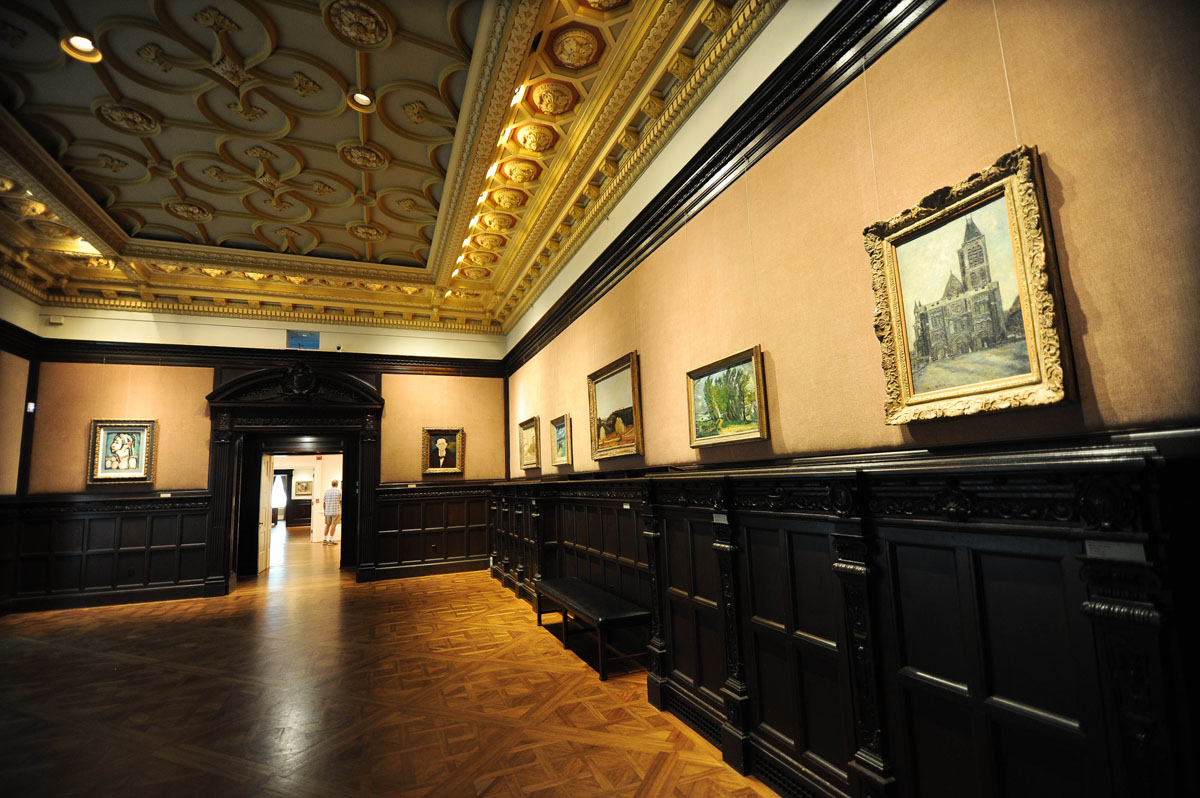Adjacent to the Georges Braque and the Cubist Still Life, 1928-1945 exhibition, visitors can find a selection of works by another generation of School of Paris artists. In the 1940s, these painters experimented with abstraction and large format canvases loaded with paint, pattern, and texture. They worked in Paris after the Second World War, a time of intense creativity and renewal in France. Though many were foreign born, they all became French citizens. Paintings by Nicolas de Staël (b. St. Petersburg, Russian, 1914–d. Paris, 1955); Olivier Debré (b. Paris, 1920–d. Paris, 1999); Serge Poliakoff (b. Moscow 1906–d. Paris 1969); Pierre Soulages (b. Rodez, France 1919); Maria Elena Vieira da Silva (b. Lisbon, 1908–d. Paris, 1992) are on view in this installation.

(Left to right) Serge Poliakoff, Composition, 1957, Tempera on plywood panel 34 7/8 x 45 1/2 in. Acquired 1959.; Pierre Soulages, July 10, 1950, 1950, Oil on canvas 51 1/4 x 63 5/8 in. Acquired 1951; Olivier Debré, Cliffs, 1955, Oil on canvas 57 1/2 x 38 1/2 in. Acquired 1959.

(Left to right) Nicolas de Staël, Fugue, between 1951 and 1952, Oil on canvas 31 3/4 x 39 1/2 in. Acquired 1952 ; Maria Elena Vieira Da Silva, Easels, 1960, Oil on canvas 45 1/4 x 53 7/8 in. Acquired 1961.
Duncan Phillips was the first museum director in America to purchase and exhibit work by many of these artists. Already in 1951, Phillips was showing the most current French art in Advancing France, an exhibition organized by Louis Carré Gallery, Paris, and circulated through the American Federation of Arts. Phillips purchased Soulages’s painting July 10, 1950 (1950) from this exhibition. A year earlier, through dealer Theodore Schempp, Phillips discovered Nicolas de Staël, an artist influenced by Paul Cézanne, Henri Matisse, Georges Braque, and other French modernists. Soon after, Phillips acquired the first de Staël painting for a U.S. museum and later in 1953, he hosted the artist’s first solo show. In 1959, Phillips gave Olivier Debré his first U.S. museum exhibition, from which the paintings Personnage Blanc (1958) and Cliffs (1955) were both acquired through Knoedler Gallery, New York. In 1961, shortly after purchasing Easels (1960) by Maria Elena Vieira da Silva, also through Knoedler Gallery, Phillips exhibited this painting with others in the artist’s first U.S. solo show. During his tenure as director, Phillips frequently featured these impressive works with European and American modern painting from the collection.
Renée Maurer, Assistant Curator



